Planktonic foraminifera
Type of resources
Topics
Keywords
Contact for the resource
Provided by
Years
Formats
Representation types
Update frequencies
-

Age model tie points and micropalaeontological data for International Ocean Discovery Program Hole U1488A. Relative abundances of Neogloboquadrina acostaensis and six morphospecies of Pulleniatina (planktonic foraminifera) from the hole. Coiling ratios (% dextral) specimens for lineages of Pulleniatina with 95% confidence intervals. Supplementary data table to Pearson, Young, King and Wade (submitted), Biochronology and evolution of Pulleniatina. Table includes data relating to the Pulleniatina lineage from International Ocean Discovery Program Hole U1488A.
-

Qualitative abundance data from micropalaeontological residues from International Ocean Discovery Program Sites U1554, U1555, U1562, U1563 and U1564. Data represents abundance and preservation state of planktonic foraminifera and other sedimentary components from washed residues sieved at > 63 microns. Relative abundances and counts of left and right coiling ratios of selected species of planktonic foraminifera are recorded.
-
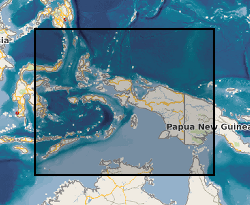
International Ocean Discovery Program Expedition 363, planktonic foraminifera range chart data Planktonic foraminifera range charts indicating: Column A: Sample ID Columns B and C: sample interval Columns D and E: top and bottom sample depth Column F: Zone (Wade et al., 2011) [W11] Column G: Zone name
-
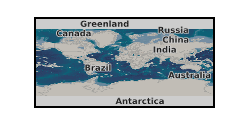
Results of shore-based micropaleontological analysis, summarizing planktonic foraminifera biostratigraphy at Site U1559A. IODP Hole U1559A located in the central South Atlantic (30°15.6335′S, 15°2.0942′W). Collected data allowed to identify slumped interval of older material present within much younger upper part of the local sedimentary sequence.
-
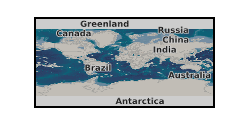
Morphometric data, produced and used, to describe Globigerinoides rublobatus n. sp., a new species of fossil planktonic foraminifera from the Pleistocene Indian Ocean. We used image analysis and morphometry of 860 specimens from International Ocean Discovery Program Site U1483 in the tropical Indian Ocean to document morphological variability in the new species and related taxa.
-

Excel file containing abundance data of planktonic foraminifer from IODP Expedition 375 Hole 1520C (41R-44R)
-
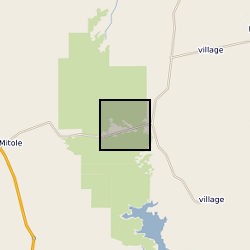
Data from Tanzania Drilling Project Core Site 14 B. Data spans the Paleocene Eocene Thermal Maximum ~56 million years ago. Data includes: bulk sediment geochemistry, BIT index and GDGT data, n-alkane d13C data, single specimen planktonic foraminifera stable isotope data and planktonic foraminifera count data. Geographic location 9°16'59.89"S, 39°30'45.04"E
-
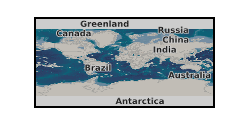
Mg/Ca in multiple species of planktonic foraminifera from five time slices since the Middle Miocene to present (target ages 15, 12.5, 10, 7.5, 4.5, 2.5 and 0 Ma). These samples are from a range of globally and latitudinally distributed DSDP (Deep Sea Drilling Program), ODP (Ocean Drilling Program), IODP (International Ocean Discovery Program) open ocean sites. From low to high latitudes these are: Site U1338, U1489 (Eastern and Western Equatorial Pacific), Sites 871, 872, and Site U1490, (Western Tropical Pacific), Site 242 (Mozambique Channel, Indian Ocean), U1482 (Australian Continental Margin), Site 516 (Western Atlantic Ocean), Site 1138 (Kerguelen Plateau, Southern Ocean). The Mg/Ca ratios were measured using Inductively coupled mass spectrometry (ICP-MS) at Cardiff University between December 2018 and June 2019. The data were collected to explore Mg/Ca values for modern and extinct species at different intervals of time (which were different climatically) and at different geographical locations. This data was collected by E.Mawbey as part of a project funded by NERC (Q10 project) to investigate changes in foraminiferal depth habitat in response to different climate conditions.
-

These data are described fully in the following publication: S. Barker, J. Chen, X. Gong, L. Jonkers, G. Knorr, D. Thornalley, Icebergs not the trigger for North Atlantic cold events. Nature 520, 333-336 (2015). The dataset comprises planktonic foraminiferal census counts and counts of Ice Rafted Debris (IRD) from sediment samples collected during Ocean Drilling Programme (OPD) leg 162 site 983 in the Northeast Atlantic (60.48°N, 23.68°W, 1,984m water depth). The data were collected between Jan 2011 and Dec 2014. The dataset includes values every 2cm from 2 to 51.5m (metres composite depth) along the ship-board splice. Before counts were performed bulk sediments were spun overnight in distilled water, before sieving over a 63µm sieve. All portions were dried, weighed and stored. Counts were performed on a split of the >150µm fraction. The dataset can be employed to assess changes in surface temperature and presence of rafted ice over the site over the past 440kyr or so. This information is of interest to paleoceanographers and paleoclimatologists. The dataset was created and interpreted by a team at Cardiff University, with additional input from other authors named in the publication. The dataset is complete except for one or two samples that were not received from the repository.
-

Oxygen and carbon isotope ratios (δ18O, δ13C) were measured on 10 to 12 shells of mixed-layer dwelling species Globigerinoides subquadratus from the 250 to 315 μm size fraction from 425 meters composite depth (mcd) until its extinction at 390 mcd. Analyses then continue with Globigerinoides spp. until 350 mcd. In a few samples, where foraminiferal density was low, only 5–7 specimens were analyzed. Analyses were made with a VG Optima mass spectrometer with multi prep device at the British Geological Survey, Keyworth, UK. When picking shells, care was taken to exclude individuals with broken or missing chambers, although preservation of specimens was generally excellent (Fox & Wade, 2013). The external reproducibility of our measurements is ±0.07‰ and ±0.05‰ for δ18O and δ13C respectively. To examine the reproducibility of the results, duplicate measurements were made on 35 samples (5%), which indicate mean reproducibility better than ±0.12‰ and ±0.14‰ for δ18O and δ13C, respectively. Oxygen isotope data are reported as per mil on the VPDB scale (Table S1) calibrated through laboratory and international standards. At ODP Site 1146, δ18O and δ13C were measured by Holbourn et al., (2010) on the mixed-layer dwelling planktonic foraminifera Globigerinoides obliquus or Gs. subquadratus, using 10 to 20 well-preserved tests from the size fraction 250-350 μm. Paired measurements in 51 samples indicate no significant offset in δ18O and δ13C between Gs. obliquus and Gs. subquadratus. Detailed methods are outlined in Holbourn et al., (2010). δ13C data are not used here. For Mg/Ca analyses, we selected 25–35 specimens of Trilobatus quadrilobatus (140–550 μg) from the 250 to 315 μm size fraction; the same size fraction as used for δ18O analysis, to minimize size-related intraspecific elemental variation (Elderfield et al., 2002). Analyses were performed on 86 samples over the studied interval. The tests were gently crushed and subsequently cleaned according to the protocol of Martin & Lea (2002) to remove clays. Cleaning included a reductive step with hydrazine to remove Mn-(hydr)oxides. Samples were measured on an ICP-AES device at Christian-Albrechts-Universität zu Kiel, Germany. Analytical precision is ~1.1%, based on measurements of an internal laboratory standard. Replicate Mg/Ca measurements revealed an average standard deviation of ~0.08 mmol/mol. Adequate cleaning is indicated by very low Fe/Ca, Al/Ca and Mn/Ca ratios.
 NERC Data Catalogue Service
NERC Data Catalogue Service